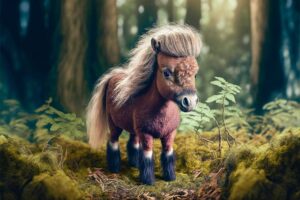Famous Horses in Literary Fiction
Horses have been a cornerstone of literary fiction for centuries. Symbolising freedom, courage and beauty, they often become sounding boards for the emotions of the non-equine protagonists in the stories in which they appear.
Indeed, the classic novel ‘Don Quixote’ (1605) by Miguel de Cervantes, widely considered to be the first of its kind, features Rocinante, an old, worn out, malnourished horse chosen as the noble steed of the titular hero for his fantastical adventures. He mirrors Quixote’s own flaws and limitations, yet the two remain faithful to each other throughout.
‘Black Beauty’ (1877) was the only novel written by Anna Sewell, but became an immediate best-seller and has remained in print. Narrated by the anthropomorphic title character, a handsome, well-bred horse, the story highlights the emotional, almost spiritual connection, between horses and human beings and is structured in such a way as to blur the equine human divide.
Into the twentieth century, ‘National Velvet’ (1935) by Enid Bagnold recounts the unlikely story of Velvet Brown, a shy, nervous Sussex teenager, who trains and rides her horse, The Piebald, or The Pie for short, whom she wins in a raffle, to victory in the Grand National. Nine decades after its publication, the novel remains an inventive fairytale. As Brazilian novelist Paulo Coelho once put it, “We often don’t realise that the extraordinary is to be found in the lives of ordinary people.”
The fifth installment of ‘The Chronicles of Narnia’, ‘The Horse and His Boy’ (1954) by C.S. Lewis, Hwin, is a nervous, gentle mare, who spends most of her life in human captivity. However, with his mistress, Aravis, a young noblewoman, threatening suicide, she is forced to reveal her ability to talk and together they flee to the freedom of Narnia.
Continuing the high fantasy theme, Shadowfax, “the lord of all the horses”, renowned for his exceptional speed, intelligence and courage is chosen and tamed by Gandalf the White, a wise wizard, in ‘Lord of the Rings’ (1954-55) by J.R.R. Tolkien. Symbolically, he represents untamed power and freedom, which stands in stark contrast to the oppression of Sauron, the Dark Lord.
 Human fascination with horses is ancient and has only increased since they were first domesticated, five or six millenia ago, not least because of their ability to form deep connections with people. The advent of moving pictures, in the late nineteenth century, provided another outlet for the portrayal of horses and horsemanship.
Human fascination with horses is ancient and has only increased since they were first domesticated, five or six millenia ago, not least because of their ability to form deep connections with people. The advent of moving pictures, in the late nineteenth century, provided another outlet for the portrayal of horses and horsemanship. The first animated cartoons appeared in the first decade of the twentieth century and it’s fair to say that cartoon horses weren’t far behind. Horace Horsecollar, for example, was one of the earliest animated characters created by Walt Disney, making his silver screen debut, as regular domesticated horse, in ‘The Plowboy’ (1929). Recognisable by his trademark headcollar, overalls, bow tie and bowler hat, he quickly evolved anthropomorphic traits – not least being an attention-seeking showoff – and, along with his girlfriend, Clarabelle Cow, played a supporting role to Mickey and Minnie Mouse.
The first animated cartoons appeared in the first decade of the twentieth century and it’s fair to say that cartoon horses weren’t far behind. Horace Horsecollar, for example, was one of the earliest animated characters created by Walt Disney, making his silver screen debut, as regular domesticated horse, in ‘The Plowboy’ (1929). Recognisable by his trademark headcollar, overalls, bow tie and bowler hat, he quickly evolved anthropomorphic traits – not least being an attention-seeking showoff – and, along with his girlfriend, Clarabelle Cow, played a supporting role to Mickey and Minnie Mouse.